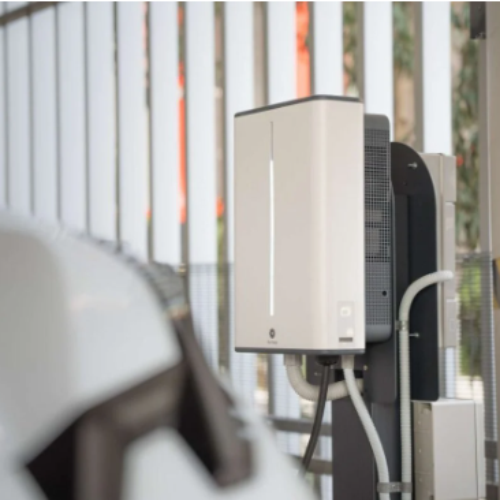The Electric Nation project – being run by Western Power Distribution (WPD) and CrowdCharge – is exploring how vehicle-to-grid (V2G) electric vehicle (EV) chargers can provide flexibility for the grid.
Last month two new energy partners- Igloo Energy and Green Energy UK – were unveiled, with the project to have four such partners to enable a more realistic simulation of a future in which many streets may have a number of EVs using V2G chargers with different suppliers.
Current± caught up with Mike Potter (MP), CEO of CrowdCharge, and Ricky Duke (RD), innovation and low carbon network engineer at WPD, to talk about what they hope to discover from the project.
What was the process like for getting both Igloo Energy and Green Energy UK on board?
MP: The relationship has been great. With Green Energy UK, we knew them already and they’re a lot smaller as an organisation so they’re more nimble in the way that they can think about these things. But in terms of the nuts and bolts of it really, like anything, we needed to explain what we were looking at doing. I think everyone’s got a bit of an idea of what V2G means – you know, it’s a battery on wheels and if you’ve thought about batteries then you understand what you might be able to do with them – but there’s a lot of detail in there.
From a networks perspective, what are you hoping to achieve from the project?
RD: We want to understand, first of all, how energy suppliers are going to use V2G, how customers interact with it and what the effect is going to be on the network.
This is obviously involving a range of real world suppliers rather than just one supplier, which most of the trials are looking at – this is great as if everybody’s doing the same thing as that’s quite easy to manage. When you’ve got lots of different suppliers all flipping charge/discharge at different times, how does that impact our low voltage network? Does some of it cancel out?
We built a really good tool off the back of the first Electric Nation project, and we’ve feeding this network assessment tool and all of the data from that trial into a revised version. This tool will look at the effects on the network of V2G, and whether it’s something that we actually need to address with some operating parameters and whether it can be used to support the network. But also there’s a whole load of information we’re going to learn around how people how customers interact with this.
Applications to take part are still open- what sort of households are you looking for?
MP: As we went through the engagement process we made a couple of decisions on the types of homes that we could include. We excluded homes with more than one EV because we needed a baseline of behaviour,but we did decide to include people with solar because we thought it was so instrumental in people’s decisions to take V2G that we should really include that.
I think the combination of V2G with low carbon technologies (LCTs) is going to be one of the really fascinating things. Do they cancel each other out, do they stack on top of each other to make a different type of issue for the network? Common sense says they should cancel each other out because the goal for the homeowner is to get as low of an electricity bill as possible but in reality, what does that look like?
Whilst the trial element of the project is yet to commence, what do you anticipate to be the next steps after it completes in 2022?
RD: The first Electric Nation was a huge project that was the largest smart charger project in the world at its time. That set the industry baseline for what we know about EVs and how people charged and the effect on the electricity network. That was a massive trial; this is following on from that, taking it one step further. I still think we’re only scratching the surface of how EVs are going to be used in the future. In a couple of years time, when this project comes to an end, there might be a different technology that comes out of EVs that we need to look at. In terms of technology, we’re at the Nokia 3310 of EVs; they haven’t even created the iPhone yet.





